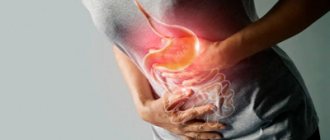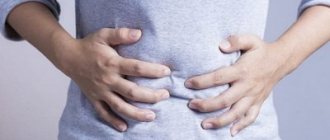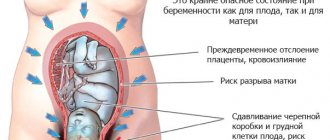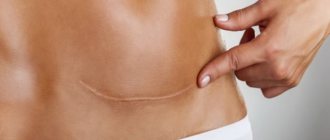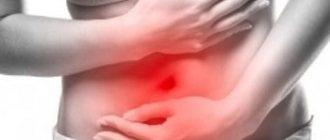Poisoning is a large group of pathological conditions, the key factor in the development of which is exposure to toxins on the body. These can be a variety of substances - from industrial to household. The most common types of poisoning are considered to be food poisoning - this is the consumption of poor-quality food contaminated with pathogenic microbes or their toxins. Usually this condition is not severe and disappears within a couple of days as the body rids itself of toxic substances. But there may be more serious cases that require hospitalization and active treatment.
In most cases of food poisoning, food is contaminated with pathogenic bacteria, such as salmonella or E. coli, staph, or a virus such as norovirus. Symptoms of food poisoning appear within 1 to 2 days after eating contaminated food, although they can begin anywhere from a few hours to several weeks later.
In most cases, all signs disappear after a few days, and the person fully recovers. Diet and plenty of fluids are often sufficient to treat these conditions. If symptoms of poisoning are severe or persistent, or the person is more vulnerable to serious infection (for example, because they are older or have certain medical conditions), further treatment may be needed. In this case, tests may be done on stool samples to find out what is causing the symptoms, and antibiotics may be prescribed if the results indicate it is a bacterial infection.
Medicines to stop nausea and vomiting (antiemetics) may also be prescribed if the condition threatens dehydration and complications. In some cases, hospitalization may be required for several days so that the person's condition can be monitored by doctors and fluids administered directly into a vein (intravenously). For most poisonings, it is necessary to take oral solutions for rehydration (combat dehydration), use enzyme preparations and sorbents, and medications to restore microflora. Only doctors can select the best anti-poisoning pills for adults, although there are a number of drugs that can be used at home.
Top 5 rating according to KP
We have selected a number of drugs that are most often recommended for food poisoning in adults and can be used at home, under the supervision of a doctor. In case of complications or deterioration of the condition during treatment, you must call a doctor at home.
Activated carbon
Activated carbon. Photo: Pharmstandard-Leksredstva
This medicine is sold in tablets that have a specific black color. It can be purchased at any pharmacy without a prescription; it belongs to the group of sorbent substances that do not have selectivity. The medicine is based on activated carbon, which absorbs toxins, metabolic products, fragments of bacteria or viruses from the intestinal lumen.
The drug is used:
- for any types of poisoning;
- for toxic infections (consumption of poor quality food);
- for acute intestinal infections of microbial and viral nature;
- for any type of diarrhea.
Although the drug is well tolerated and widely used, it also has a number of contraindications for use. These are intolerance to components, ulcers in the digestive tract, bleeding, since the color of the drug can disguise them. Also, charcoal should not be prescribed simultaneously with oral antidotes, as it will also bind drug components. The drug may cause side effects such as constipation if high doses are taken.
show more
Mezim forte
Mezim forte. Photo: Berlin-Chemie
The medicine is in the form of film-coated tablets. They can be bought without a prescription; the main active ingredient is pancreatic enzymes, which help ease digestion, which is impaired by poisoning and foodborne illnesses with diarrhea. Usually taken as part of complex treatment against the background of diet correction as the condition improves.
Shown:
- to facilitate digestion of food;
- breakdown of proteins and fats when following a diet after poisoning;
- eliminating nausea, bloating, flatulence due to dietary errors.
The drug has a number of contraindications, these include, in particular, the period of acute pancreatitis or exacerbation of chronic pathology. It is usually well tolerated; side effects include allergies, constipation, and bloating.
show more
Cerucal
Cerucal. Photo: PLIVA Hrvatska doo
The medicine is produced in the form of tablets or solutions for intramuscular or intravenous administration. This is an antiemetic drug that simultaneously normalizes intestinal motility, which helps eliminate painful nausea and vomiting due to foodborne toxic infections due to the main active ingredient - metoclopramide.
Main indications for use:
- acute gastritis;
- gastroesophageal reflux with vomiting;
- pyloric spasms;
- digestive disorders with nausea and frequent bouts of vomiting.
The medicine has a number of contraindications that you need to remember - these are problems with the liver and kidneys, neurological disorders, bleeding from the digestive tract, intestinal obstruction, glaucoma, age under 2 years.
On a note
Instructions: how to act in case of food poisoning
Nifuroxazide
Nifuroxazide-Vertex. Photo: Vertex
The medicine is available in the form of capsules and individual sachets with powder for oral administration. Sold without a medical prescription, it is an antimicrobial drug with the active ingredient nifuroxazide, a synthetic antibacterial agent. It has a bactericidal effect, with virtually no effect on the intestinal microflora.
Indications for use:
- various types of diarrhea;
- foodborne illnesses caused by bacteria;
- diarrhea due to various types of digestive disorders.
The drug has virtually no contraindications, with the exception of early childhood (up to 2 months). The drug is not absorbed into the blood, but works at the intestinal level.
show more
No-shpa
No-shpa. Photo: Chinoin
Sold in the form of tablets of a typical appearance and bright yellow color and “forte” form, dispensed from pharmacies without a prescription. The main active ingredient is the antispasmodic component – drotaverine.
Relaxes the smooth muscles in the digestive tube, eliminating spasms during poisoning and reducing pain.
Indicated for:
- gastritis of unspecified nature;
- pain arising from digestive disorders;
- spasms of smooth muscle fibers;
- intestinal colic.
Despite its safety and effectiveness, the medicine has a number of contraindications for use - allergies to components, liver and kidney failure, heart damage, hypotension, age under 6 years, lactation, galactose and lactose deficiency, pregnancy. Side effects include palpitations, decreased blood pressure, and headache.
show more
Good to know
Poisoning by poisonous plants: first aid
Causes of abdominal pain
Abdominal pain due to food poisoning is provoked by exotoxins - the toxic results of bacterial activity. Microorganisms that enter food include:
- with initially contaminated products (the infection is transmitted from a sick person in food production or during food preparation);
- with spoiled products (as a result of improper storage or non-compliance with transportation conditions);
- with products that have been subjected to extensive chemical processing (nitrates, pesticides, etc.);
- through dirty hands;
- when drinking contaminated water.
Bacterial toxins irritate the mucous membranes and damage the cell membranes of the digestive organs. Products of animal origin are primarily perishable and susceptible to contamination (contamination):
- meat, sausages and semi-finished meat products;
- milk, dairy and fermented milk products.
Main types of infectious agents
| Gram-negative | Gram-positive |
| klebsiella | enterococci |
| Proteus | streptococci |
| salmonella | bacillus cereus |
| citrobacter | clostridia |
| shigella | |
| Vibrio cholerae |
Important! Food intoxication is especially dangerous when infected with pathogens of infectious diseases (cholera, dysentery, botulism, salmonellosis).
If a person is poisoned by alcohol, fusel oils, ethanol and decomposition products (in particular, acetaldehyde) become provocateurs of pain and other symptoms. Additional factors for the occurrence of painful sensations are chronic pathologies of the gastrointestinal tract, pancreas, and hepatobiliary system:
- pancreatitis, gastritis, gastroesophageal reflux (GER);
- ulcerative lesions of the stomach and duodenum;
- ulcerative colitis, irritable bowel syndrome;
- hepatosis, hepatitis, cholangitis, cholecystitis, etc.
Against the background of alcohol or food poisoning, infection with rotavirus, the disease enters the acute stage.
Pain from mycotoxin poisoning
Severe food poisoning and acute pain are caused by mycotoxins - toxic metabolites of inedible mushrooms. The mechanism of development of intoxication and damage to internal organs depends on the specific poison contained in the mushrooms. Toxic compounds in the toadstool destroy the membranes of liver cells and stop protein production.
Morel poisons cause hemolysis - destruction of red blood cells (erythrocytes). Red fly agaric contains muscarine, a powerful neurotoxin. The direct effect of mycotoxins on the mucous membrane and nerve endings causes abdominal pain.
Pain from poisoning with nitrates and pesticides
Unregulated amounts of nitrates and pesticides are typical for plant products such as berries, herbs, vegetables, and fruits. Chemical compounds from nitrogen agricultural fertilizers have an ulcerogenic effect, burn the mucous membrane, stimulate increased production of gastric juice, and irritate nerve receptors. All this provokes severe pain.
A safe dose of nitrates for an adult is 5 mg per 1 kg of body weight. When the concentration of nitrates in the body is high, they are transformed into dangerous nitrites. They oxidize iron in hemoglobin, disrupting the gas exchange process of oxygen and carbon dioxide. A health-threatening dose is considered to be 500 mg of nitrates.
Types of food poisoning
How to choose anti-poisoning pills for adults
If the poisoning is severe or lasts more than a day without getting better, you should consult a doctor. A specialist can determine the causes of food poisoning and select anti-poisoning pills for adults. In case of severe symptoms, the following groups of drugs are used:
- antibiotics and intestinal antiseptics, if the microbial nature of the infection is proven;
- drugs to absorb toxins (activated carbon, Enterosgel, white coal, Smecta);
- means for normalizing intestinal motility (prokinetics) and antiemetics;
- solutions for oral rehydration (mixtures based on salts and glucose);
- probiotics and prebiotic preparations, synbiotics;
- additional drugs to eliminate symptoms (antipyretic, antidiarrheal).
Any medications and their combinations should be selected only by a doctor, excluding surgical diseases, dangerous conditions and complications.
Species classification of poisonings
Pain in the stomach and adjacent digestive organs is caused by poisoning caused by consumption of:
- low-quality, incorrectly processed food, expired products (toxicoinfection or bacteriotoxicosis);
- inedible mushrooms (mycotoxicosis);
- food with synthetic impurities (food non-microbial intoxication);
- medicines (pharmacological or medicinal);
- ethanol-containing drinks in high doses (alcoholic).
Chemical poisoning occurs as a result of non-compliance with safety precautions when using household chemicals. The most common are ethanol poisoning, mycotoxicosis, food poisoning, intestinal (stomach) flu caused by rotaviruses of serogroups A, B, C.
Intoxication can be acute or chronic. In the first case, the body quickly reacts to the penetration and spread of toxins, pain in the stomach is pronounced. In the second, there is a permanent supply of small portions of poison. When a certain amount of toxic substances accumulates, an acute form of the disease develops.
Types of infection
Food contamination is usually caused by bacteria, but can sometimes also be caused by viruses or parasites. Some of the main options.
Campylobacter. In our country, Campylobacter bacteria are the most common cause of food poisoning. The bacteria are commonly found in raw or undercooked meat (especially poultry), unpasteurized milk, and untreated water. The incubation period (the time between eating contaminated food and the onset of symptoms) of food poisoning caused by Campylobacter is usually two to five days. Symptoms usually last less than a week.
Salmonella. Salmonella bacteria are often found in raw or undercooked meats, raw eggs, milk and other dairy products. The incubation period usually ranges from 12 to 72 hours. Symptoms usually last four to seven days.
Nature and location of pain during poisoning
Where does your stomach hurt? Toxic infection is characterized by paroxysmal pain in the umbilical area. After defecation, the pain dulls for a while, then arises with renewed vigor. Poisoning with poor-quality food is characterized by acute pain in the epigastric (epigastric) region, heaviness in the lower abdomen, and painful tenesmus.
Alcohol intoxication is accompanied by prolonged pain in the area:
- stomach - the upper part of the abdominal cavity bordering the diaphragm;
- pancreas – left abdominal zone, top;
- gallbladder - right side of the abdomen (closer to the hypochondrium).
Intoxication pain in the abdomen often radiates to the lumbar region. With repeated vomiting, pain appears in the esophagus and throat due to overstrain and irritation of the mucous membrane. The state of acute intoxication is relieved in a hospital setting. A patient with severe symptoms needs emergency medical care. Delay carries a risk to life.
Treatment methods for stomach pain after poisoning
If the painful sensations are not acute, they try to alleviate the condition at home. There are a number of known ways to get rid of pain.
To begin with, you should follow a therapeutic diet and use traditional medicine methods. If therapy does not have the desired effect, it is recommended to resort to medications, but treatment with drugs and their dosage must be prescribed by a doctor.
Therapeutic diet
Following a diet in the first days after poisoning is especially important. Healthy nutrition will help, without overloading the pancreas, restore the intestines and microflora.
The main rule is small meals, eating 5 times a day in small portions. This makes it easier for the stomach and intestines to cope with digestion.
It is recommended to exclude fatty, fried, salty, smoked foods from the diet, and stop drinking alcoholic beverages. It is preferable for the food to be steamed or boiled.
Recommended menu includes:
- Strong, but not sweet tea (green, black);
- Boiled rice without spices;
- Oatmeal cooked in water;
- Scrambled eggs;
- Rusks;
- Bananas;
- Apples;
- Kefir;
- Low-fat yogurt.
To cleanse the body, it is useful to drink a large amount of liquid; preference should be given to water without chlorine and gas. Drinking plenty of chamomile tea will help calm the stomach and help remove toxins from the body.
As your health improves, it is permissible to expand your diet, but it is recommended to carry out the process gradually.
Traditional medicine methods
A person who has been poisoned by food, drugs or alcohol can treat the stomach with folk recipes. Alternative medicine has proven itself to be an effective tool in the fight against pain and illness after poisoning. Before starting any of the natural methods, you should consult your doctor. Natural ingredients can cause allergic reactions in the body.
The most effective methods:
- Lemon water. Add a spoonful of freshly squeezed lemon juice to a glass of warm water. The drink is recommended to be consumed before each meal (15 minutes before). Thanks to citric acid, the stomach is cleansed of toxins and harmful substances, which helps to improve well-being.
- Caraway. Pour crushed cumin seeds into a glass of hot water, add a teaspoon of salt. Make an infusion before each meal. After use, noticeable relief occurs in the abdominal area.
- Honey is a cure for many diseases. It is recommended to consume a tablespoon three times a day, this helps remove harmful substances from the body and also regulates the production of acid in the stomach.
- Mint. An infusion prepared with mint eliminates painful spasms and accelerates the process of cell regeneration.
- Potato. Root juice eliminates pain, protects the walls of the stomach, and relieves inflammation. It is recommended to consume one hour before meals. Method of preparation: Peel and wash the potatoes. Grate (one large tuber is enough). Using gauze, squeeze out the juice. You should drink it no later than 15 minutes after preparation.
- Cabbage. Vegetable juice helps to quickly eliminate cramps and stomach pain. For people with high acidity, juice should be made from the leaves of a fresh vegetable. For low acidity, it is recommended to drink sauerkraut juice. The high content of vitamins helps to quickly eliminate pain and restore cells in the stomach. The method of preparation and use is similar to the potato treatment.
- Flax seeds. It is recommended to prepare a decoction of flax seeds, which is taken on an empty stomach before breakfast.
- Dill. An infusion prepared from dill seeds helps improve intestinal motility, relieve pain, and eliminate abdominal cramps. It is recommended to drink one spoon 3 times a day.
If a healthy diet and traditional methods have not shown effectiveness, it is possible to turn to the help of medications.
Drug treatment of stomach pain after poisoning
After suffering from intoxication, the body suffers from dehydration. It is advised to drink plenty of fluids, but it is necessary to take medications that remove toxins from the body.
Medicines purchased at a pharmacy without a doctor's prescription:
- Activated carbon;
- Smecta;
- Polysorb;
- Enterosgel.
The drugs are recommended to be taken at the first symptoms of poisoning, but also for stomach pain. The regimen and dosage must correspond to those specified in the instructions for each drug.
When toxins are removed from the body, beneficial substances are also removed along with them. To restore microflora, it is recommended to take medications containing enzymes and prebiotics. You can purchase medications in pharmacies:
- Bifiform;
- Linux;
- Bifidumbacterin;
- Hilak Forte.
In case of severe painful spasms or unpleasant sensations, it is advised to pay attention to painkillers: No-shpa, Spazmalgon.
Before using medications, it is recommended to consult a specialist. Pain can signal the presence of serious pathologies; self-treatment can cause serious harm to the body.
Tips for providing first aid
Tip #1
Forcefully rinse the stomach. Regardless of whether there is vomiting or not, the stomach must be emptied of poisoned food. This will stop the absorption of toxic substances into the blood and reduce the intensity of abdominal pain. Washing is carried out using a weak solution of potassium permanganate (potassium permanganate). The patient should drink 2-2.5 liters of liquid and induce vomiting by pressing two fingers on the base of the tongue.
Tip #2
Give the patient a sorbent drug. Sorbents Polyphepan, Enterosgel, activated carbon, Polysorb bind and remove poisons, soothe painful manifestations.
Tip #3
Replenish fluid loss. Water or a solution of Regidron powder will help prevent dehydration and restore water and electrolyte balance. You need to drink in small portions.
Giving help
What to do if you have food poisoning? First of all, it is necessary to call an ambulance and provide the patient with first aid. If there is a suspected intestinal infection, the patient will be hospitalized in the infectious diseases department. Detoxification in case of severe alcohol poisoning is carried out in a specialized hospital.
Symptoms of food poisoning
The doctor decides how to treat non-hazardous food poisoning at home. Usually the patient is prescribed:
- sorbents (Enterosgel, Polysorb);
- probiotics (Bifidumbacterin, Linex, Bifiform, etc.);
- antacid medications (Almagel, Phosphalugel, etc.).
For severe diarrhea, fixative medications are indicated. Acute pain can be relieved with Drotaverine (No-shpa). General recommendations for poisoning include bed rest, plenty of fluid intake, and diet correction. The use of traditional medicine (decoctions of medicinal herbs and wood raw materials) is allowed.
Symptoms of intoxication
Depending on the type of product that caused the poisoning, signs of the disorder appear from 10 minutes to 2 hours. Main symptoms of poisoning:
- Heaviness in the abdomen;
- Nausea;
- Vomit;
- Diarrhea;
- Dizziness;
- General weakness.
Symptoms are accompanied by abdominal pain, which takes on a different character (colic, aching, acute pain).
Painful sensations can occur as a result of intestinal dysfunction.
